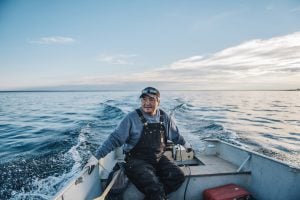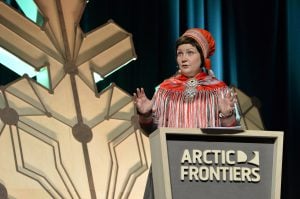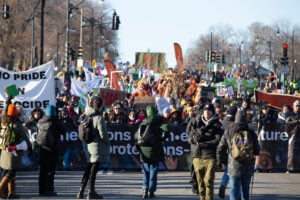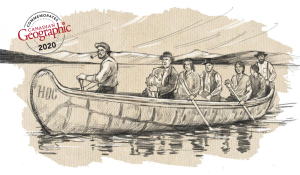
Environment
Inside the fight to protect the Arctic’s “Water Heart”
How the Sahtuto’ine Dene of Déline created the Tsá Tué Biosphere Reserve, the world’s first such UNESCO site managed by an Indigenous community
- 1693 words
- 7 minutes
This article is over 5 years old and may contain outdated information.
People & Culture

A Yellowknife-based organization that’s establishing an urban land-based healing program for Indigenous people won the $1-million Arctic Inspiration Prize on Wednesday night in Ottawa.
“We are so very grateful to the Arctic Inspiration Prize for the opportunity to bring connection and healing back to our communities in the north,” said a post on the Arctic Indigenous Wellness Project’s Facebook page after the prize ceremony. “Let the work begin!”
The project targets Inuit, First Nation and Métis men and women on the streets who are at risk of suicide, substance abuse, incarceration and homelessness, and combines Indigenous cultural education with traditional therapeutic interventions in a wilderness urban setting to improve their mental health.
More than $2.4 million was shared among eight teams across the three categories of the prize, which Arnold Witzig and Sima Sharifi launched in 2012 to recognize, promote and implement knowledge and innovation in the Canadian Arctic. A full description of each winner can be seen here.
During the event on Wednesday, Witzig and Sharifi announced that they would be donating $60 million to the Arctic Inspiration Prize to ensure its long-term future.
Natan Obed, Canada’s national Inuit leader and president of Inuit Tapiriit Kanatami, applauded the couple’s donation. “We know Northerners have the solutions to improve the quality of life in the Canadian North,” he told the Globe and Mail. “Sima and Arnold’s generosity and commitment to the North provides Northerners with financial support they need to implement their innovative projects that benefit northerners and their communities.”
Are you passionate about Canadian geography?
You can support Canadian Geographic in 3 ways:

Environment
How the Sahtuto’ine Dene of Déline created the Tsá Tué Biosphere Reserve, the world’s first such UNESCO site managed by an Indigenous community

Environment
The uncertainty and change that's currently disrupting the region dominated the annual meeting's agenda

People & Culture
Indigenous knowledge allowed ecosystems to thrive for millennia — and now it’s finally being recognized as integral in solving the world’s biodiversity crisis. What part did it play in COP15?

History
A look back at the early years of the 350-year-old institution that once claimed a vast portion of the globe